Genre: RPG Developer: Hot-B Publisher: Super Fighter Team Players: 1 Released: 2011
Seasoned Genesis gamers who remember the magazine ads for Star Odyssey also remember eagerly awaiting the game’s release. At the time, there were scant few RPGs released on the console in America, with the bulk of the available titles coming from Sega itself. After blowing through Phantasy Star 3, Sword of Vermilion, and Super Hydlide, I was quite anxious for Sage’s Creation’s next offering. The company had something of a mixed reputation among my friends, and opinions seemed to go either way as to how Star Odyssey would turn out. Personally, I was hoping for an effort more like Crackdown and less like Shadow Blasters. Sadly, Sage’s Creation vanished from the gaming landscape before it could bring its final game to market, leaving us with an itch none of us could scratch. We all sighed and moved on to other RPGs, but there always remained that nagging feeling that we had missed one.
Now, exactly twenty years to the day since its Japanese release, Star Odyssey is set to give gamers long-desired relief. Published by Super Fighter Team, the game is the third modern Genesis release to be officially licensed by its original developer. This one is almost as significant as Beggar Prince, the first such licensed title, and the game which marked the birth of the official retro-modern Genesis market, in that it is the first time a Japanese company has given its blessing to such a project. After negotiating the contract with Hot-B, SFT cleaned up and correctly translated the original game for its long-delayed debut for western audiences.
The most instantly visible enhancement SFT has made is the revised and translated script. The original was almost incomprehensible and plagued with errors, and the final product shipped with a great sci-fi story that is pretty deep for a 16-bit RPG. There are no sleepy, teenage heroes here. Things quickly escalate from a case of mistaken identity to a cosmic crisis that threatens the entire galaxy. During their quest to investigate an attack on planet Delta by the Radanians, a supposed ally, players will take control of characters of various alien races and visit several different planets. The dialogue is well-paced and intelligent, and there are lots of twists to keep players awaiting the next conversation. Together, it all kind of reminds me of a very primitive Mass Effect in style. I’ve always liked sci-fi games that tried to establish an actual universe and not just give hard to pronounce names to funky-looking aliens. While highly enjoyable now, I’m convinced Star Odyssey’s plot would have blown people’s minds had it been released this way back in 1991.
Though many may look at the visuals for Star Odyssey with an odd sort of bated skepticism (“maybe it looks better in motion…”), two things should be considered here. First, one has to keep in mind that this title is two decades old and released during before third parties unlocked the magic of the Genesis with wonders like Rocket Knight Adventures, and second, it does look better in motion. In fact, it looks pretty darn sharp, especially in s-video. The graphics are most likely going to be the first of a few things people take issue with, and it’s important to keep a fair context on things. The only thing that really bothered me was that a lot of the dungeons looked the same inside, meaning that if I used a staircase and then got up for a soft drink or bathroom break, I sometimes wasn’t sure where my characters were when I came back.
Combat is menu-driven, and the battles move at a brisk tempo. Characters use an assortment of melee and ranged weapons (swords, rifles, etc.), as well as magic, known as “Force.” Stronger characters can defend their weaker allies, and there is always the option to run. The encounter rate is very high, and this means that some initial grinding is necessary before venturing far from home. It picks up a bit more later on, but party members are thankfully quite strong by then, and the combat doesn’t last very long.
If there is one aspect of combat that bothered me, it was the ambush attacks. Enemies can gain the initiative through surprise, forcing the party to fight groups both in front and behind simultaneously. This is actually kind of cool, and it forces players to manage their party effectively, as characters only do half damage to enemies on the opposite plane. Only by setting a character’s position to “rear” can players ensure that he does regular damage against them. However, this means that his standard damage against attackers on the other plane will now be halved. Since there can be a maximum of only three characters in the party, this means that at least one will have to stick to rear defense.
The high encounter rate and surprise attacks are balanced to a degree by a generous revival system. Players aren’t kicked back to the title screen when their party is wiped out but are instead taken back to wherever they last saved the game, experience and items intact. The only loss is half the group’s money, but this is never a real problem in Star Odyssey, and by the end of the game the party is throwing around money like Thorton Melon at a sorority pep rally (it’s a Back to School reference. Look it up, youngsters!). There aren’t any items for escaping dungeons either, so all that cash will be put to good use in buying healing items.
Star Odyssey has a great soundtrack, and aside from overuse of the same town theme (does this galaxy not have iTunes?), the score is diverse and clear-sounding. It definitely has that “early Genesis” appeal to it, something that really distinguished games made between 1989-1991. Later Genesis titles sound nothing like them. I didn’t really notice the “voice acted battle cries” until the end, and they don’t add much. I prefer to hear the music, anyway.
Super Fighter Team has done an excellent job of bringing Star Odyssey full circle. Now those Sage’s Creation ads finally ring true, and we have another excellent RPG for the Genesis library. Though it might seem that this release is a bit more flawed than its predecessors, none of them are substantial and the overall quality of the game outshines them completely. Gamers who have between fifteen and twenty-five hours to kill and are itching for another 16-bit quest need not look any further. There’s a good RPG here, and it’s well worth checking out. I, for one, hope it harkens a new era of Japanese games finally making it across the Pacific. At the very least, we’re off to a great start.
SCORE: 8 out of 10

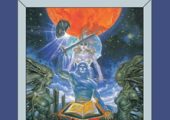
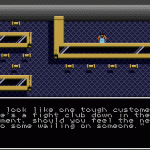
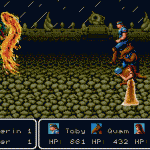
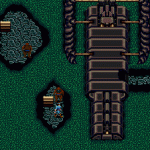
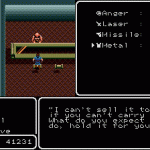
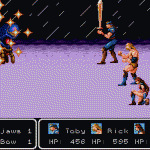
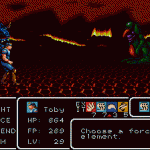
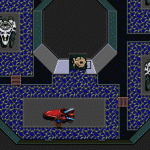
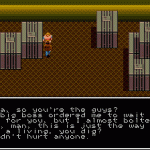
I bought Star Odyssey and despite being very excited about it I still haven’t tried it yet. This review has really revived my interest in it again. I’m really happy to hear so many positive things.
Greg J’s comments do concern me a little bit. XP grinding is the only way I know how to manage these kind of RPG’s!
This is a decent game, it has a fantastic storyline and some great music. However, the overall enjoyability of it is severely cut down but the problematic encounter rate.
Problematic you ask? Well allow me to explain. The encounter rate is very high, this on its own might discourage many gamers, however that is not the main problem. There are many great games that have high random encounter rates and still manage to be fantastic gaming experiences. The true problem with Star Odyssey is that the encounter rate is insanely high and the enemies level whenever you do. Not only do the enemies become more powerful whenever your party levels up, they actually become stronger to a much greater degree than your characters do. Basically the game punishes you for leveling. Also, it’s actually possible to screw yourself over by leveling too much. If you spend too much time grinding you might just find the game becoming unbeatable. Now combine this with the frequent battles and you have a real problem. It’s a good thing the Run feature works, sometimes…
There’s a very fine line of experience that you have to walk in order to play this game properly. Stepping off that line to either too low level or too high level will make this game unfairly difficult. So beware!
I’m of the opinion that no RPG should punish you for level grinding, so this is a big design flaw as far as I’m concerned. The great story and music go some way to redeem this title, but this game could have been better had the experience mechanic been fixed. 6/10
It’s quite a good game overall, with some mediocre audiovisuals, which are brought up by a few nice details such as the Darill/Sharill music and the cutscenss between the planets. What brings the game up is the interesting and deep story, and what takes it down are the WAAAAAY too frequent random encounters, reuse of old dungeons and the archaic menues. So, a typical sci-fi RPG with some ups and downs.